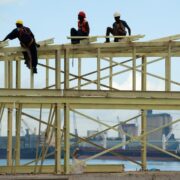
- Rwanda’s 2025/2026 budget rises 21% to $4.8B, approved on June 9
- Funds target new airport, RwandAir expansion, and key development sectors
- IMF forecasts continued growth, though external risks remain
The Rwandan government approved on June 9 a FY2025-26 budget of over 7,000 billion Rwandan francs (about $4.8 billion), up 21% from the previous year’s revised budget.
The budget aims to support strategic investments, including the construction of the new Kigali International Airport and the expansion of national carrier RwandAir. Other priorities include industrialization, boosting agricultural productivity, expanding electricity and clean water access, improving transport, and modernizing education and healthcare.
Funding will come from various sources: domestic revenues total 4,105.2 billion francs, including 3,628 billion from taxes and 477.2 billion from other sources. External financing comprises 585.2 billion in grants and 2,151.9 billion in loans.
Rwanda’s economy grew by 8.9% in 2024, up from 8.2% in 2023, driven by gains in food production, construction, and services, according to the International Monetary Fund (IMF). The outlook remains positive, but the IMF warns of risks from global price volatility, slowing growth among trade partners, and rising trade barriers, which could affect foreign financing.
Under its second National Strategy for Transformation (NST2) for 2024–2029, Rwanda aims to reach middle-income status by 2035 and high-income status by 2050. The strategy includes 13 goals, such as job creation, investment promotion, export growth, improving education, reducing malnutrition, and enhancing public services.
The World Bank projects Rwanda’s GDP will grow at an average of 7.1% from 2025 to 2027, supported by continued expansion in agriculture, industry, and services.









Comments